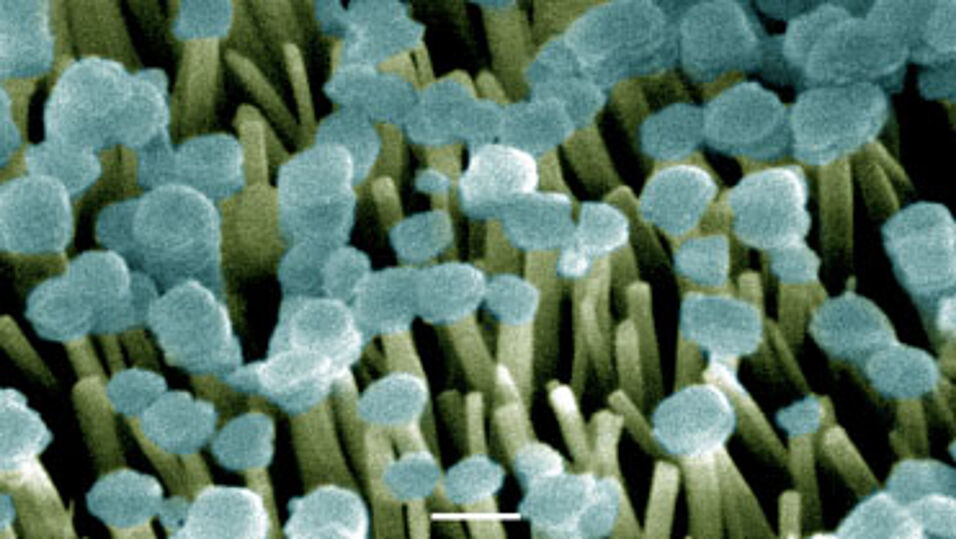"If you look at a leaf or a sea shell, they have amazing structural and functional properties," says chemist Jia Min Chin. Considering that nature is limited in the range of elements to choose from when building these biological composites, especially compared to chemists who are spoilt for choice in the materials they utilise, this is even more astonishing.
"How can a sea shell, mainly made of calcium carbonate, be so tough and resistant against impacts of rocks? Or think of iridescent colours of peacock feathers, which do not result from a pigment. Nature has created fascinating, complex structures that are key to specific functions and properties," Chin adds.
How to control the structure of materials
In November, the Singapore-born scientist joined the Faculty of Chemistry, and currently establishes her group at the Department of Physical Chemistry. Her team will address the scientific challenge how to control the structure of materials across multiple length scales, from the molecular level over the nano scale to the macroscopic world.
Unfortunately, the structural and functional complexities of natural materials are difficult to integrate into synthetic composites.
"How can we control the design of particles and how can we control the way nano and micro particles align with each other? That’s an exciting question!"
Chin is interested in this hierarchically complexity, and aims at addressing this challenge through an interdisciplinary approach. In order to study structural complexity, the scientist works with metal-organic frameworks or MOFs, a class of molecular material.
MOFs as a starting point
"MOFs are a good platform for us to start with when building up structures from the molecular level to larger scales. We can design MOFs to build crystals. We can design them so that their surface has a certain charge or that they either repel or like water. We can design their shape on the molecular level by controlling how these crystals grow," Chin explains. As a next step, her group wants to explore “how we make them pack together the way we want". Can you use MOFs to get assemblies even larger than the millimetre scale? Can you make responsive materials with them?
Chin is always searching for elegant solutions that enable the researchers to design the materials. "Can I exploit charge repulsion? We are looking for simple techniques applied in a clever manner," the scientist says. Thinking out of the box is what Chin strives for in her research.
Fostering crazy ideas
In Singapore, Chin used to work a lot with high school students. "With one group, we were able to build on a bench top microscopic mushrooms made out of MOFs, and these mushrooms were not only super hydrophobic, they could also repel oils, and my high school students ended up having a scientific paper in the Journal of the American Chemical Society," Chin says.
Unfortunately, intrinsic motivation decreases over time. Something that Chin aims at counteracting. "I am trying to get students excited again about what they do and to bring forward their crazy ideas."
- Ass. Prof. Jia Min Chin, PhD started in November 2019 a tenure track position at the Institute of Physical Chemistry of the Faculty of Chemistry, University of Vienna. Prior she worked at the University of Hull’s Chemistry Department. After her studies in Singapore, she did her PhD studies at the Massachusetts Institute of Technology. Jia Min was awarded the 2013 L’Oréal Singapore For Women In Science National Fellowship.
Her research group works on the preparation, assembly and multi-length scale structuring of Metal-Organic Framework (MOF) and other colloidal materials and composite systems for optical and catalytic applications.




